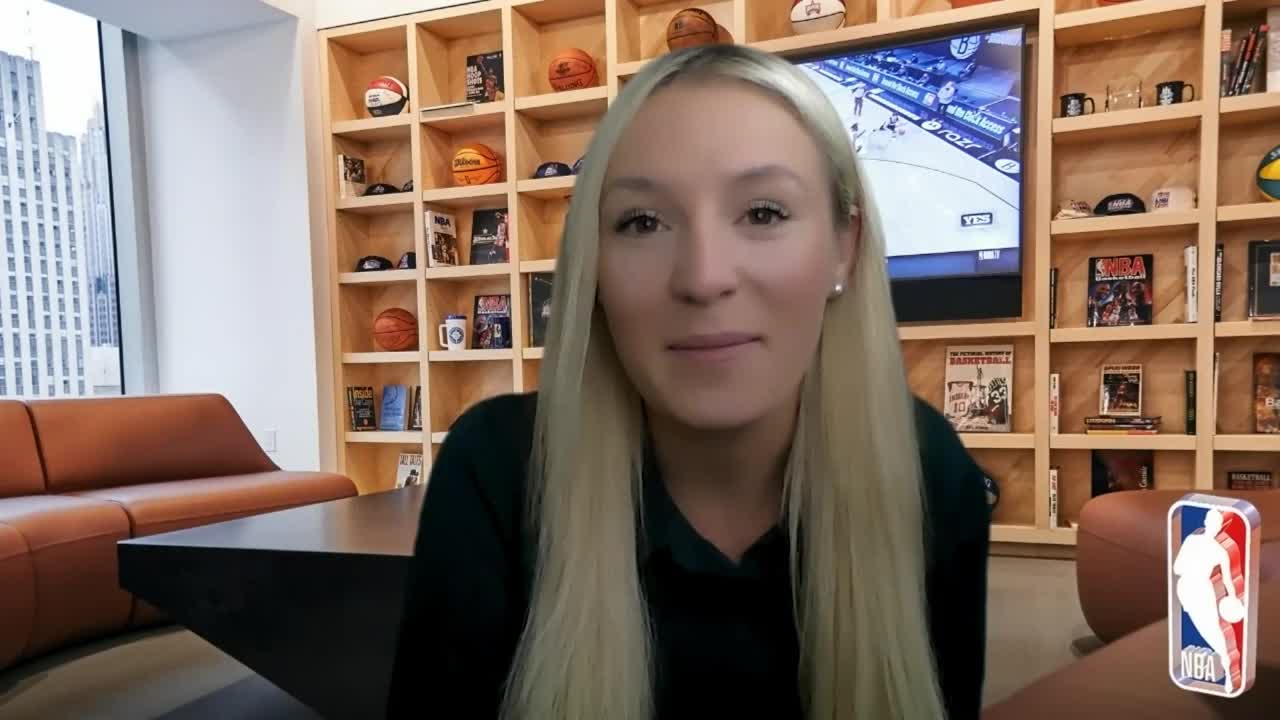BACKGROUND
The National Basketball Association (NBA) is a professional basketball league comprised of 30 teams across North America featuring the best basketball players in the world. Julie Friedman, Director, Partner Services, Global Partnerships & Media, and Gioia Shames, Senior Manager, Partner Services, Global Partnerships & Media, together help manage all events across the NBA and affiliate leagues. “Our Partner Services teams works to deliver hospitality to the league’s corporate marketing partners, media partners, licenses, retailers, and more,” explains Julie.
In managing two marquee events - the NBA All-Star Weekend and NBA Draft - Julie and Gioia’s team previously relied on highly manual solutions for diagramming and seating requirements. They note that the goal of both events is to strategically sit partners and staff for hosting and relationship building. “We used a platform that was much more manual and involved a lot of grids, us making our own templates, and manually seating each guest in a long list that left a lot of room for human error and was highly manual,” explains Gioia. This process resulted in a high number of labor hours for the team as well as frustrations with inefficient processes.
The NBA All-Star Game is a two-night, full arena event with about 1,500 seats located throughout the arena. The NBA Draft encompasses half an arena for one night and features roughly 800 seats. The laborious process of manually diagramming and managing seating for these events took up valuable time for the team that could otherwise be focused on optimizing the event experience.
“In the old process, it took us about two weeks to complete seating for the NBA All-Star Game,” notes Julie. The diagramming feature allows the NBA team to envision an accurate depiction of the court or stage and other elements included. Importantly, collaborative capabilities within the tool let different users work on floor plans simultaneously. Julie explains that the measurable efficiencies the tool has created have been clear. She says, “Now we can complete it in about four days with a lot less human error.” This is over a 70% reduction in time spent to complete seating for the NBA All-Star game.
The intuitive and user-friendly nature of the tool also ensures the NBA team is able to self-manage their diagramming and seating needs. “We love being able to drag and drop attendees from the attendee list into specific seat assignments,” Gioia shares. The NBA team is then able to view updates in real time for full visibility across teams. Gioia adds, “It was great to be able to do this in such a quick way while also being able to see in real time who was left to be seated as well as the open seats left to be used.” The automatic updates mean each guest profile is updated as they are plotted in seats, and all data made available immediately through automated reporting. “The reporting functionality has saved so much time for us and avoided all the room for human error,” insists Gioia. This not only allows them to provide more accurate reporting for their internal team, but has also increased visibility by being able to more widely share their seating plans with the entire department.
RESULTS
Empowering stakeholders through data-driven decision making
Gioia adds that having all this required data centralized in one location within Cvent creates a single source of truth. This benefits their attendees as much as it does their internal teams. She says, “All of this functionality really helped to support our in-person experience by ensuring all of our guests were able to sit with the appropriate people hosting them at the appropriate level or area within the arena.” By harnessing this data to drive strategic decision making for each event, the NBA team is better able to serve the needs of internal stakeholders and attendees alike.
Julie adds, “There are two major ways that we utilize this data from the solution. Once the seats are plotted before anyone is seated, the solution provides visibility into where the seat locations are within the arena, and this helps us from a business standpoint push for better seat locations year over year.” These on-demand reports from Cvent allowed their senior leadership to see, for the first time, where seat locations were throughout the arena. This in turn allowed Julie and Gioia’s team to build business cases for improved seating locations in the future.
Julie adds that the second way in which they utilize automated reporting is in sharing out final seat locations with key stakeholders more broadly than before. This not only ensures visibility into seating plans across the organization throughout the planning process, but also eliminates the possibility of human error or the need to manually manage the end-to-end process.
The Event Diagramming solution not only ensures a quick process for the internal teams, but also offers a great point of reference year over year. “The finished product is always a good reference for us year over year to see where people sat and where they should go for the next year to come,” explains Julie.
In the meantime, they continue to value the close partnership with their Cvent team members. “Having a strong relationship with our account managers and our dedicated resource from the Cvent team was crucial to our success,” insists Gioia. “The close relationship and personal support is really invaluable to us."
She adds that, given the size and pace of their business, as well as the nature of the guests they manage, a company that provides basic support wouldn’t suffice. They need one-on-one support in real time and technology partners who truly understand their team’s goals and the overall business. “It’s been so important that we are working with someone who is an expert, not only in the platform and tools, but also with our NBA business needs as well,” she adds. Julie and Gioia are excited to continue growing this relationship in 2023 as they look forward to new technology opportunities in the near future.









